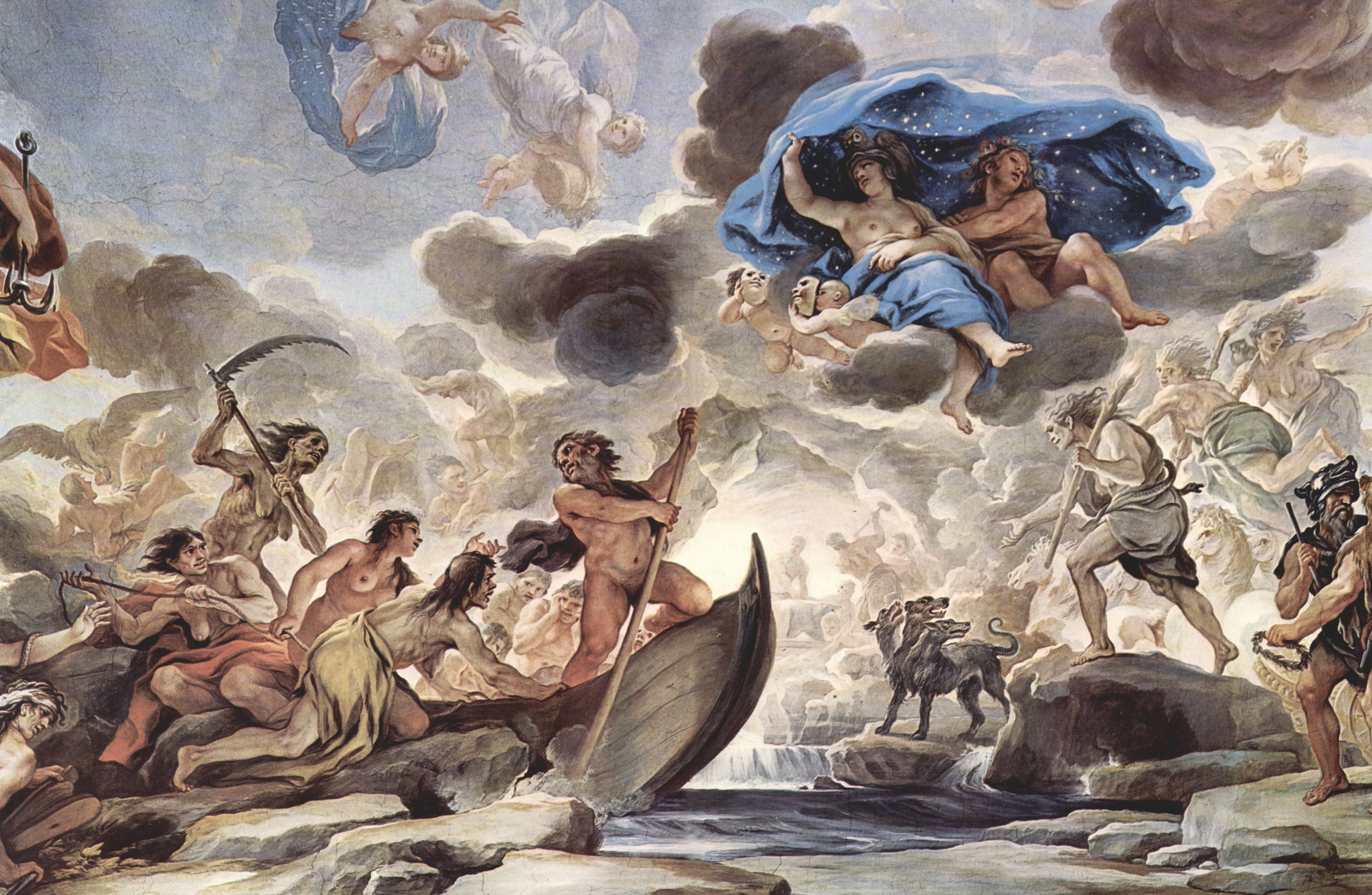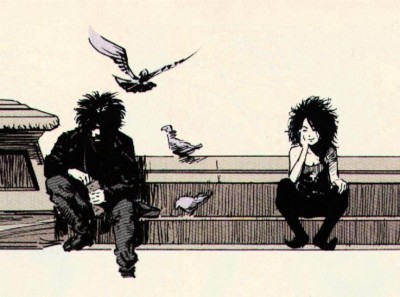䷼
Sonhos aparecem tanto explicita quanto subliminarmente nos textos de Poe. De ambas maneiras, os elementos que definem sonhos são muito presentes em seus textos. Além disso, a abordagem dele acerca disso nos fazem perguntas que ainda estão para ser respondidas, mesmo no nosso mundo contemporâneo.
Inception before it was cool
Dream within a dream começa com alguém sendo posto para dormir:
Essa cena está relacionada a um personagem mítico do folclore do norte da Europa: o Sandman. Esse conto registrava uma entidade que suavemente salpicava areia nos olhos das crianças para que elas dormissem – acordando, assim, com areia nos cantos dos olhos. A partir daí, Poe relaciona novamente areia com o sonho, pois ele tenta segurá-la em suas mãos, assim como à sua vida e memórias:Take this kiss upon the brow!
And, in parting from you now,
Thus much let me avow—
And I hold within my hand
Grains of the golden sand—
(...)
O God! can I not grasp
Them with a tighter clasp?
O God! can I not save
One from the pitiless wave?
A areia, portanto, é um símbolo relacionado com a passagem do Sonhar para o mundo real.
Outro elemento importante está em uma das imagens mais marcantes da obra de Poe, The Raven, relacionado com a mitologia nórdica, na qual Odin – o Pai de Todos – possui dos corvos: Huginn e Munnin. Eles são capazes de falar e são como mensageiros do Raven-god, como ele também é conhecido. Os corvos representam pensamento (aspecto espiritual) e memória (aspecto material), e, por consequência, mundo real e Sonhar, respectivamente. Nevermore, em Poe, é um mensageiro:
(...)Fancy unto fancy, thinking what this ominous bird of yore— What this grim, ungainly, ghastly, gaunt and ominous bird of yore
Meant in croaking “Nevermore.”
(...)
“Prophet!” said I, “thing of evil!—prophet still, if bird or devil!—(...)
Outro ponto muito forte em Poe, é a morte. Na mitologia grega, Morpheus, Hypnos e Thanatos são irmãos¹. Inclusive, na história do Sandman, Ole Lukoje – Ole Fecha-olhos, como também é conhecido – tem um irmão de mesmo nome, que só visita as pessoas uma vez, para um sono eterno. Portanto, Sonho está intimamente ligado com Morte; o que cria a pergunta que Poe faz, mas ainda sem resposta:
Is all that we see or seem
But a dream within a dream?
Em Matrix, temos a mesma pergunta: o que é a realidade? Quando Morpheus oferece a Neo as duas pílulas, reconhecemos a versão moderna do mito já citado: a pílula é a areia. É a passagem do Sonhar para o mundo real. Neo escolhe acordar.
Todas essas imagens são reforçadas em Sandman, a graphic novel mais profunda do nosso tempo, já que todos esses elementos são reforçados: areias, sonhos e corvos. Gaiman nos diz que é Sonho que define a realidade, assim como Morte define a vida". Porque nós sabemos que acordaremos de um sonho, Poe usa essa imagem para nos perguntar sobre a Morte – um sonho do qual nós sabemos que não vamos acordar.
✠
❦
¹ De acordo com Hesíodo, Morpheus é o deus dos sonhos e lider dos Oneiroi. Hypnos e Thanatos são irmão gêmeos. De qualquer maneira, a depender do ator, varia seu parentesco. Por exemplo, Ovídio diz que Morpheus é filho de Hypnos.
❦
Dreams appear both explicitly and subtly in Poe's work. Either way, the elements that define dreams are very present in his texts. Furthermore, the approach made towards it rises questions that are yet to be answered by our modern world.
Dream within a dream begins with someone being put to sleep; this scene is related to a mythical character in Northern European folklore: the Sandman. This tale recorded¹ an entity that gently sprinkled sand in children's eyes to make them sleep. Hereafter, the poem relates again to sands, for he tries to take hold of it as he tries to take hold of his life and memories. The sand, thus, is a symbol that is related to the passing from the dreaming to the waking.
Moreover, one of Poe's strongest images, The Raven relates to Norse mythology, whereas Odin – the All-father – has two ravens: Huginn and Munnin. They are capable of speaking and are as messengers of the Raven-god. They stand for representations of thought (spiritual aspect) and mind (earthly aspect), as much as waking and dreaming, respectively. Much like Nevermore is a messenger in the poem.
It may be argued that Death is a mostly recurrent theme in Poe's work. In Greek mythology, Morpheus, Hypnos and Thanatos are brothers². Therefore, Dream is intimately close to Death; leading us to the ultimate question Poe asks³ that is still unanswered. The Matrix brings the very same question: what is reality? When Morpheus gives Neo the chance to choose the pill, it is the sand he is offering: the passage from the dreaming to the waking.
The whole imagery is yet reinforced on Sandman⁴, the most powerful graphic novel of our time for it displays the very same elements: sand, dreams and raven. Gaiman tells us: "it is Dream that defnines reality as much as Death define life"⁵. Therefore, for we most surely know we shall wake up from a dream – but we don't have the same certainty as for death –, Poe uses the image of Dream to ask us the questions about Death.
䷼
¹ Hans Christian Andersen recorded the folktale Ole Lukøje in 1841
² According to Hesiod, Mopheus is the god of Dreams and leader of the Oneiroi. Hypnos and Thanatos are twin brothers. There are differences regarding their parenthood, though; for instance, Ovid says Morpheus is son of Hypnos.
³ From Poe's Dream within a dream:
Is all that we see or seem
But a dream within a dream?
But a dream within a dream?
⁴ A graphic novel written by Neil Gaiman. It chronicles the adventures of Dream, who rules over the Dreaming.
⁵ The Sandman #48: Brief Lives, Chapter 8






Nenhum comentário:
Postar um comentário